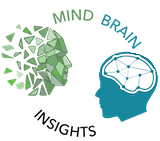 Neuroscience continues to progress rapidly. Valuable data, knowledge and insights are obtained daily — in neuroscience, cognitive neuroscience, neuroimaging and the rest of the brain sciences. Much is known about the brain. However what’s missing is a conceptual framework of brain function, in relation to the mind. This is known as the mind brain problem. How are (conscious & unconscious) mental states and processes expressed in the brain? In what neural form does sensation and perception, recognition, thought, emotion, language, executive control, goals, attention, intention etc. take? How does the brain create, represent, mediate or compute mental phenomena?
Neuroscience continues to progress rapidly. Valuable data, knowledge and insights are obtained daily — in neuroscience, cognitive neuroscience, neuroimaging and the rest of the brain sciences. Much is known about the brain. However what’s missing is a conceptual framework of brain function, in relation to the mind. This is known as the mind brain problem. How are (conscious & unconscious) mental states and processes expressed in the brain? In what neural form does sensation and perception, recognition, thought, emotion, language, executive control, goals, attention, intention etc. take? How does the brain create, represent, mediate or compute mental phenomena?
Despite vast knowledge, there is little understanding of how brains work (Kotchoubey, Tretter, Braun et al., 2016). As Jeff Hawkins says, “neuroscience is data rich and theory poor.” There’s still no (agreed-upon) brain theory.
Surprisingly little progress has been made on this problem. How the neocortex works is still a mystery (Hawkins, Lewis, Klukas et al., 2019). A brain theory is viewed as a long term goal not to be attained anytime soon. This pessimism is caused I argue not by a lack of knowledge, but of conceptual understanding. There is no agreed upon definition of the mind (Poldrack & Yarkoni, 2016). And even were it defined, how it connects to the brain (the so-called “easy problem of consciousness”) is widely acknowledged to be unsolved as well.
I argue the key to developing a brain theory is not the brain, but the mind that operates within. The brain’s main purpose (along with regulating the body) is to create recognition, meaning, understanding, emotion, pain, pleasure, the self, motivation, goals, plans, intentions and so on. And, the mind is very closely connected to, if not mirrored by, brain activity. Illuminating the mind/brain relationship is after all the main goal of cognitive neuroscience. Therefore, once defined accurately, the subjective mind (as expressed in real time) can be functionally “mapped” to the brain’s activity.
For example, consider a person who performs the task “reach for my phone.” This behavioral task will activate specific, predictable, and definable mental content. It starts with the imagination & intention “to reach.” As reaching begins, the (visual & somatosensory) perception of reaching, and the prediction of future (reach-involved) perception occurs. Object identification of “my phone,” and associated goals of “I want to send a text” and emotions like “mild desire and excitement” also activate. To understand and accurately label the brain activity involved in “reach for my phone,” the subjective components involved must be listed and defined. Otherwise, you’ll be left with brain activity the meaning of which is both incomplete and inaccurate.
However there’s great news in all of this. If you can define the mental components of interest accurately, you have the foundation of a solution to the mind/brain problem. The more accurately the mind is defined, the more accurately it can be connected to the brain, and vice-versa. Even without a mind model, just a mind-first approach alone can enhance brain science fundamentally. The more accurately and precisely-defined the mind, the more accurately and precisely the brain’s activity can be decoded, and encoded.
Seen in a fact-based (what we know for sure about the mind) and inclusive (it includes all mental states and processes) light, the mind becomes a viable path toward creating neural correlates of it. The main requirement is a mind model. This would feature an accurate, precise, and comprehensive definition of its “parts” — i.e. a cognitive ontology — and their activity through space and time in the brain. Once in place, such a model can enable (functional, and structural) maps of the brain which correspond to it. And more good news: given an accurate theoretical framework there’s no reason why the construction of an accurate mind/brain model can’t take place — right now.
References
Hawkins, J., Lewis, M., Klukas, M., Purdy, S., Ahmad, S. (2019). A Framework for intelligence and cortical function based on grid cells in the neocortex. Frontiers in Neural Circuits, 1. https://doi.org/10.3389/fncir.2018.00121
Kotchoubey, B., Tretter, F., Braun, H.A., Buchheim, T., Draguhn, A. Fuchs, T., Hasler, F., Hastedt, H., Hinterberger, T., Northoff, G., Rentschgler, I., Schleim, S., Sellmaier, S., Van Elst, L.T., Tschacher, W. (2016). Methodological problems on the way to integrative human neuroscience. Frontiers in Integrative Neuroscience, 1. https://www.frontiersin.org/articles/10.3389/fnint.2016.00041/full\
Poldrack, R.A., Yarkoni, T. (2016). From brain maps to cognitive ontologies: informatics and the search for mental structure. Annual Review of Psychology, 67, 587–612. https://www.ncbi.nlm.nih.gov/pmc/articles/PMC4701616/
